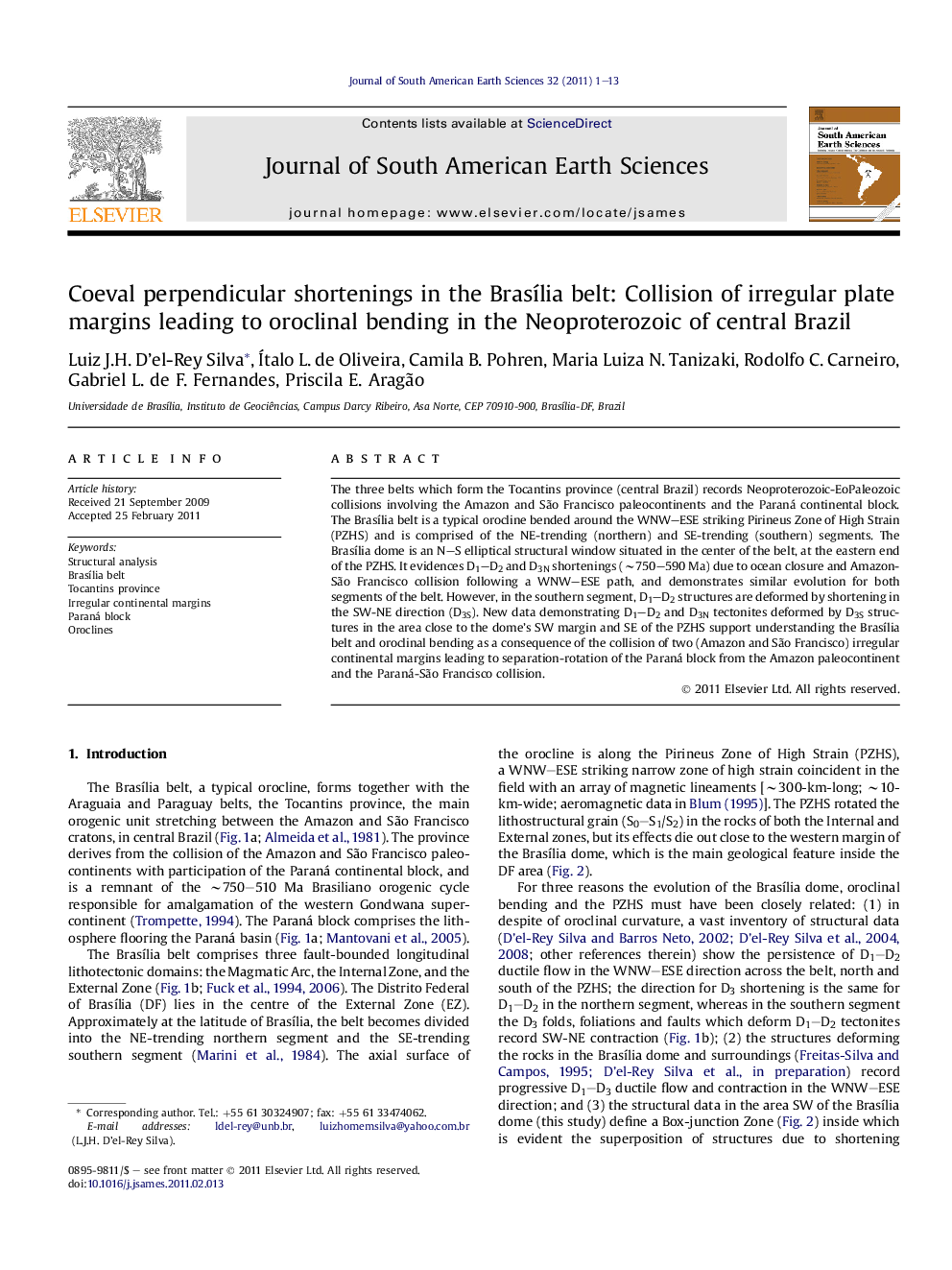| Article ID | Journal | Published Year | Pages | File Type |
|---|---|---|---|---|
| 4682616 | Journal of South American Earth Sciences | 2011 | 13 Pages |
The three belts which form the Tocantins province (central Brazil) records Neoproterozoic-EoPaleozoic collisions involving the Amazon and São Francisco paleocontinents and the Paraná continental block. The Brasília belt is a typical orocline bended around the WNW–ESE striking Pirineus Zone of High Strain (PZHS) and is comprised of the NE-trending (northern) and SE-trending (southern) segments. The Brasília dome is an N–S elliptical structural window situated in the center of the belt, at the eastern end of the PZHS. It evidences D1–D2 and D3N shortenings (∼750–590 Ma) due to ocean closure and Amazon-São Francisco collision following a WNW–ESE path, and demonstrates similar evolution for both segments of the belt. However, in the southern segment, D1–D2 structures are deformed by shortening in the SW-NE direction (D3S). New data demonstrating D1–D2 and D3N tectonites deformed by D3S structures in the area close to the dome’s SW margin and SE of the PZHS support understanding the Brasília belt and oroclinal bending as a consequence of the collision of two (Amazon and São Francisco) irregular continental margins leading to separation-rotation of the Paraná block from the Amazon paleocontinent and the Paraná-São Francisco collision.
► New features in the area SW of the Brasília dome, Brasília orocline, central Brazil. ► Crossed foldings (3rd phase) demonstrate the dome shortly predates oroclinal bending. ► Deciphering how the Paraná block took part in the Amazon-São Francisco collision. ► The block rifted--drifted from the SW margin of the Amazon paleoplate, ca. 620 Ma ago. ► Understanding the evolution of the São Francisco craton and marginal belts.
